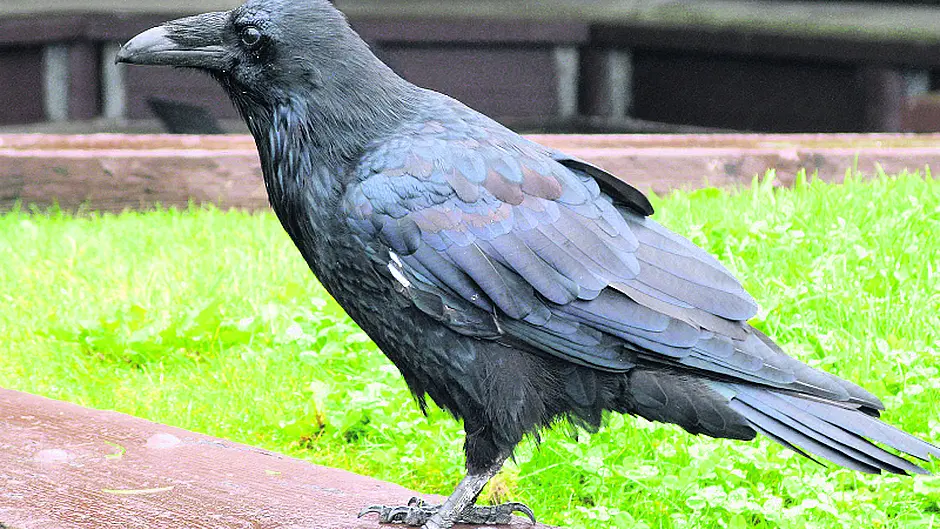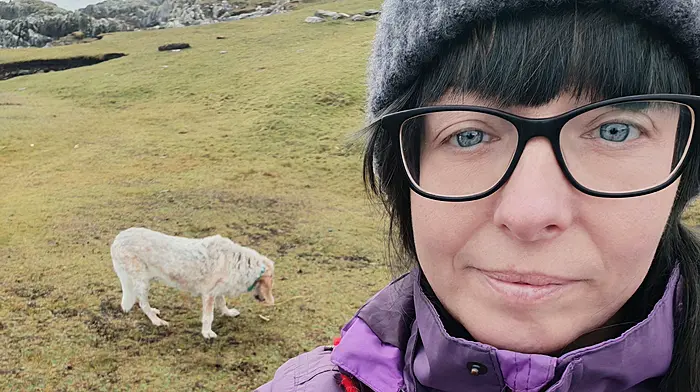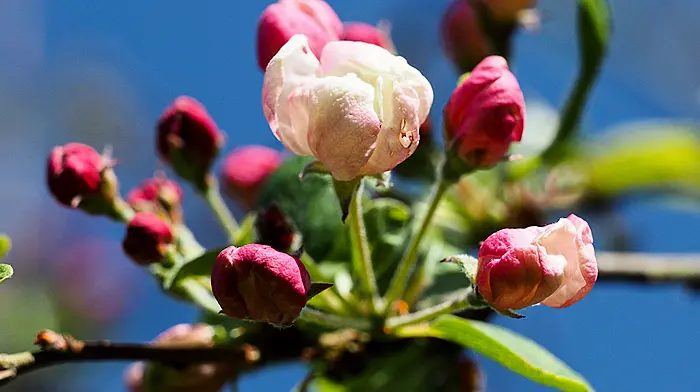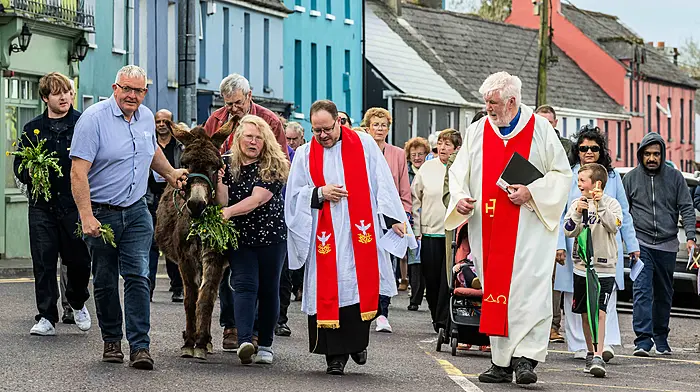Wildlife with an amateur observer
There are only a few birds that take to the skies during the storms of winter. The grey crows and black-backed gulls have been riding the winds in this townland, the latter seemingly effortlessly balancing their hefty bodies in the gales.
The raven is also a sky acrobat in winter, performing seemingly impossible aerial antics as part of its courtship rituals. We are extremely lucky to have this rare bird in our midst on our peninsula. And we also get to enjoy its strange calls, as it warbles, croaks and bubbles overhead.
Large black bird
The raven is the biggest member of the crow family and is the largest perching bird in Ireland. It has a wingspan equivalent to that of a herring gull. It’s an all black bird with a very large beak and whiskery throat feathers.
Like other corvids, the raven is extremely intelligent. It can live up to 60 years in captivity, giving it plenty of time to learn new skills and make use of its excellent brain. However, its average lifespan in the wild is closer to 20 years.
The raven is a sociable bird and a good communicator. It is extremely vocal, calling frequently, usually with deep, resonant croaks. It is noted for its variety of sounds and its ability to mimic the speech of humans.
The raven is very acrobatic in flight at any time of the year but particularly so around now as the breeding season approaches. Ravens pair for life and they often fly side by side at a great height. As part of the courtship rituals, one of them – usually the male – can suddenly roll upside down to glide in this position for a short distance before righting himself again. He can even offer food to his mate in the air. While I’ve not seen these incredible feats, I have seen one of the pair suddenly close its wings and powerfully nose dive, followed shortly after by its mate.
Omnivorous
The raven eats mainly carrion but will also take small mammals, eggs of other birds and any other form of meat. It also uses its strong beak to probe the ground for worms and other invertebrates. It will also cache food in hiding places as a backup for leaner times.
The raven has long been persecuted and killed because of the belief that it kills game birds and young farm animals.
While today the raven is a bird of remote areas and cliffs, it was also once a rural bird. In medieval London, ravens were protected by law. They were used as scavengers to clean up the remains of dead animals and other human detritus in the squalid streets of the era. As the city became cleaner, this protection was removed and the raven began to be persecuted as vermin. The last pair to nest in London did so in Hyde Park in 1826. However, tame ravens are still kept in the Tower of London. This tradition dates back to the reign of Charles II. Eight resident ravens are cared for by a Ravenmaster. Any offspring that they produce are taken to another part of Britain and released each year.
Foreteller of death
Because of its propensity to eat carrion, ravens are associated with battlefields and death. In Ireland, it was seen to be an omen foretelling death. A raven in or near a house meant a death was imminent. In West Cork, it was said that when someone was dying inside, the raven would be up on the roof of the house, hopping and calling.
These beliefs stretch back into antiquity. The druids of Ireland used birds as augers to predict the future. Black birds were generally linked with divination as they were associated with the ‘Other World’. The raven’s wide range of strange-sounding calls led to the belief that it was a messenger from the gods.
‘Cormac’s Glossary’ from the ninth-century says the old Irish word for raven – ‘brandubh’ – signifies blackness and destructiveness. Another Irish text dated c. 900-1200AD gave a list of 28 possible outcomes that could be forecast from a the behaviour of a raven.
The wide variety and strange calls of the raven were also used to foretell the future. A medieval Irish text, the ‘Ravenlore’, sets out the meaning of each call of the raven in great detail. It predicted the visits of a various types of visitors as well as other events, including death. The text clearly shows that the raven was considered a highly intelligent bird.
The raven was also traditionally used as a guide to mariners. The Vikings were said to have found Iceland with the aid of the raven. According to the Bible, it was the first bird sent out of the arc by Noah. The ‘Book of Invasions of Ireland’ has another version of this tale.
Ravens and other crows have also traditionally been kept as pets and the old Irish Brehon Laws mention them as such. The decline of the raven in Britain was partly due to its popularity as a pet.
There was once a large trade in taking raven nestlings for this purpose as they made ‘amusing companions’. Charles Dickens had two domesticated ravens and this trade continued in Britain into the 20th century.
The raven’s exceptionally dark plumage was often mentioned in Irish legends in reference to beautiful black hair. ‘Raven haired’ is still synonymous with beauty today. Perhaps, for this reason, in ancient Greece a raven’s egg was used in the belief that it could restore black hair to someone who had gone grey.
For this purpose, the eggs were applied to the head, however, the person had to keep their mouth full of oil to prevent their teeth going black as well!
In the wet weather of this winter we may yet have to use the raven as Noah did:
‘At the end of 40 days, Noah opened the window of the arc ... and sent forth a raven: it went to and fro until the waters were dried up from the earth.’







